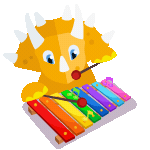How to Help Kids Become Fluent Readers
Reading is one of the most important skills children can learn, and it opens the door to knowledge, imagination, and communication. While reading with your child is a great start, helping them become independent readers is a key step in their growth. But how can we help kids read fluently and with confidence?
Mari Nakamura, a teacher and language school owner in Japan, created a special Three-Stage Literacy Program to support children’s reading development. Her ideas show how to build fluency, choose the right materials, and make reading fun and effective.
What Is Reading Fluency?
Reading fluency means recognizing words quickly and correctly, and understanding what they mean. Before children can read fluently, they need to know letters, sounds, and basic words. Fluency helps children enjoy reading because they can follow the story easily. But if the material is too hard, kids may feel frustrated and stop trying.
Choosing the Right Reading Materials
To build fluency, children need to read easy texts often—out loud, and with help when needed. Research shows that knowing at least 98% of the words in a story helps children understand what they read. The stories also need to be interesting and suitable for their age. Good reading materials make kids think about the world around them and connect to their own experiences.
Fun Ways to Support Reading Independence
Here are some ideas that help children become more fluent and confident readers:
- Start with familiar stories: Books children already know are great for building fluency. You can reread them together, or let children try reading parts on their own.
- Use shadow reading: This means reading along quietly with someone else. Children can try shadowing a parent, teacher, or an audio book—like the ones offered in Dinolingo stories. Listening and reading at the same time helps build rhythm and pronunciation.
- Read aloud together: Read a sentence yourself, then ask your child to repeat it. You can take turns and add fun voices to make it more exciting.
- Break down big words: Long words like “tyrannosaurus” can feel scary, but breaking them into syllables makes them easier. Try clapping out parts like “ty-ran-no-sau-rus” or chant the parts together for fun.
- Use movement and rhythm: Chanting, repeating with funny voices, or acting out parts of the story helps children remember the words better—and makes reading time something they look forward to.
Supporting Reading at Home with Dinolingo
Using a fun and interactive program like Dinolingo can also help kids practice reading while learning a new language. With over 25,000 activities, including books, videos, flashcards, songs, and audio stories, children can improve their reading fluency while having fun. Dinolingo’s immersive and gamified approach supports children aged 2–14 and encourages daily practice without making it feel like a chore.
Final Thoughts
Helping your child become an independent reader takes time, patience, and the right tools. With repeated reading, fun activities, and engaging stories, children can build confidence and fluency. Every small step counts, and with support from parents, teachers, and tools like Dinolingo, reading can become a joyful part of your child’s everyday life.
Start Learning a New Language Today!
Best Language App for Kids.
7-day free trial. Then only $19/month. Cancel anytime.
